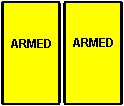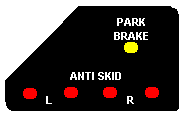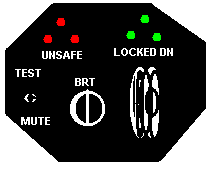|
CRM:
index
You can simplify CRM by remembering: Asking questions enhances the communication flow: and making it easy to understand, by dividing CRM into 2 processes: 1- The Communication Process and 2- The Decision Making Process The communication process involves: (a) soliciting and giving feedback; (b) listening carefully; (c) focusing on behavior, not people; (d) maintaining focus on the goal, and; (e) verifying that the operational outcome is achieved The decision making process involves: (a) identifying the problem; (b) considering appropriate SOP's; (c) thinking beyond the obvious alternatives; (d) making decisions as a result of the process; and (e) resisting the temptation to make an immediate decision, and then support it with facts. |
|
Takeoff Performance
index 4 Segments For
the first segment, (from 35' to gear retraction) the climb segment gradient required for two-engine
turbine-powered aircraft with one engine inoperative is a
positive rate of climb; For the third segment, (acceleration to engine inoperative en route climb speed, the transition segment,) a climb gradient of not less than 1.2 % is required. The fourth segment is the engine inoperative climb to the enroute altitude. |
|
| The first segment begins
just after lift-off at 35 feet, and continues (with one engine inoperative,) until
the landing gear is retracted. The second segment begins when the landing gear is fully retracted and continues until the airplane reaches an altitude of at least 400' above the runway (with an inoperative engine.) The second segment is flown at V2 and must have a gradient of at least 2.4% . The final segment (sometimes sub-divided into third and fourth) begins when transition to the enroute configuration is accomplished, meaning the flaps and gear are up, or 1500 feet, whichever is higher. |
|
| The takeoff flight path profile will vary during the transition segment depending upon obstacle location and height. Obstacle clearance may require the climb be made in the second segment configuration (gear up, flaps at takeoff setting, and takeoff power). On the other hand, without any obstacles the transition segment may start at 400' | |
Climb Gradient Calculations The method of calculating climb performance during the various climb flight path segments is a percentage of the horizontal distance traveled with zero wind. For example, if a 3.0% climb gradient is required, for every 1,000' the airplane travels horizontally it must climb 30'.
|
|
| Engine Failure at, below or
above V1
Unlike a light twin engine piston aircraft, in a light jet,
consider a takeoff mandatory for an engine failure recognized after
V1, unless the runway exceeds the runway length required-by at least 50%. Of course, always follow the
manufacturer’s memory items for the make and model. If for example,
the engine failure occurs before the decision speed is reached, the
takeoff must be aborted. If the engine failure occurs after the
decision speed is reached, the takeoff must be continued. Here is an
excerpt from the emergency checklist of a Lear 35. |
|
|
Engine Failure During Takeoff Below V1 (Lear 35) 1. Thrust Levers IDLE 2. Wheel Brakes APPLY 3. Spoilers EXTEND (T/R or D/C Deploy if Necessary) |
|
| Engine Failure During Takeoff Above V1
(Lear 35) 1. Rudder & Ailerons AS REQ’D 2. Accelerate to Vr Keep nose wheel on Runway 3. Rotate at Vr; Climb at V2 4. Positive Rate GEAR UP 5. Clear of Obstacles V2+30 FLAPS UP |
|
If the takeoff is continued, the airplane will yaw toward the failed engine. Use whatever rudder is necessary to maintain directional control and keep the wings level with the controls. |
|
|
|
|
| With an engine failure above V1
just take your time, and fly the airplane. As PIC, command what you
want done one step at a time. When the immediate-action items have
been accomplished, take no further action until after the
second-segment climb is accomplished and accelerate to engine-out en
route climb speed. Maintain the obstacle-clearance altitude as you
accelerate and retract the flaps on a normal speed schedule. Make
whatever pitch change is necessary to compensate for the flaps and
hold the altitude smoothly. Maintain obstacle clearance or
acceleration altitude, until engine-out en route speed is reached.
Monitor the engine thrust setting to avoid exceeding the
limitations. Call for the "engine-failure checklist" followed by the
"climb checklist" Consider where to land, dumping fuel if necessary. Obtain a clearance to a takeoff alternate if the departure is below minimums. |
|
|
Indicators
index Besides flying the airplane, you have to have a thorough knowledge
of aircraft systems. Knowing what each and every
indicator means is absolutely essential. The meaning of these indicators must be memorized.
Learning what the indicators signify is the start of thoroughly
learning about aircraft systems. |
|
|
|
|
|
|
|
|
Emergency Procedures
(Specific to Lear 35)
index
These are specific to certain problems that may arise, and each
procedure listed must be memorized and performed in sequence, then
reference may be made to the emergency checklist for the remainder
of the procedure. In addition to the memory items, the following
steps are considered part of all emergency situations: |
|
| Aborted Takeoff | |
| Cabin Altitude 10,000' Warning | |
| Engine Failure During Takeoff Below V1 | |
| Engine Failure During Takeoff Above V1 | |
| Engine Failure During Approach | |
| Engine Fire - Shutdown | |
| Pitch Axis Malfunction | |
| Cabin / Cockpit Fire, Smoke or Fumes | |
| Emergency Braking | |
| Emergency Evacuation | |
| Fuel Pressure Light | |
| Overspeed Warning / Recovery | |
| Roll or Yaw Axis Malfunction | |
| Stall Warning Activates | |
| Thrust Reverser Deployment / Takeoff Below V1 | |
| Thrust Reverser Deployment / Takeoff Above V1 Aeronca | |
| Thrust Reverser Deployment / Takeoff AboveV1 TR 4000 | |
| Aborted Takeoff
list 1. Thrust Levers IDLE 2. Wheel Brakes APPLY 3. Spoilers EXTENDED
|
|
| Cabin Alt
10,000’ Warning
list (Emergency Descent) 1. Crew Oxygen Masks DON & Select 100% 2. Thrust levers IDLE 3. Autopilot DISENGAGE 4. Spoilers EXTEND 5. Landing Gear (below Mmo or Vle) DOWN 6. Descend at Mmo/Vle but not below MSA 7. PASS OXY Valve NORMAL 8. PASS MASK Valve MAN
|
|
|
Cabin/Cockpit Fire, Smoke or Fumes
list 1. Crew Oxygen Masks DON & SELECT 100% 2. Smoke Goggles DON IF AVAILABLE 3. Passenger Oxygen Masks DEPLOY 4. OXY-MIC Switches ON 5. If source is not immediately known - Land as soon as possible If source is known - Extinguish fire or eliminate smoke or fumes If it cannot be verified fire is out - Land as soon as possible If fire is out - Land as soon as practical
|
|
| Emergency Braking
list 1. Emergency Brake Handle PULL OUT 2. Emergency Brake Handle PUSH DOWNWARD
|
|
| Emergency
Evacuation
list 1. Stop the aircraft 2. Parking Brake SET 3. Thrust levers CUTOFF 4. If an engine fire is suspected a. Applicable Engine Fire Handle PULL b. ARMED Light DEPRESS ONE c. Other Engine Fire Pull Handle PULL If engine fire is not suspected: a. Both Engine Fire Handles PULL 5. Batteries OFF
|
|
| Engine
Failure During Approach
list 1. Control Wheel Master Switch DEPRESS AND RELEASE 2. Thrust Lever (operative engine) INCREASE AS REQ’D 3. Flaps 20 MAX 4. Airspeed VREF + 10 MIN
|
|
|
Engine Failure
During Takeoff Above V1
list 1. Rudder & Ailerons AS REQ’D 2. Accelerate to Vr Keep nose wheel on Runway 3. Rotate at Vr; Climb at V2 4. Positive Rate GEAR UP 5. Clear of Obstacles V2+30 FLAPS UP
|
|
|
Engine Failure
During Takeoff Below V1
list 1. Thrust Levers IDLE 2. Wheel Brakes APPLY 3. Spoilers EXTEND (T/R or D/C Deploy if Necessary)
|
|
| Engine Fire -
Shutdown list 1. Thrust Lever IDLE UNLESS CRITICAL THRUST SITUATION 2. If fire continues more than 15 seconds or there are other indications of fire: a. Thrust Lever CUTOFF b. Engine Fire Pull Handle PULL c. ARMED Light DEPRESS ONE
|
|
| Fuel Press Light
list 1. Thrust Lever RETARD 2. Standby Pump ON 3. Air Ignition ON
|
|
|
Overspeed
Recovery - Overspeed Warning Horn list 1. Thrust Levers IDLE 2. Autopilot DISENGAGE 3. Identify Aircraft Pitch and Roll Attitude 4. Level Wings 5. Elevator and Pitch Trim NOSE UP AS REQ’D If Mach or Airspeed is severe or if pitch and/or roll attitude is extreme or unknown: 6. Landing Gear DOWN, DO NOT RETRACT
|
|
| Pitch Axis
Malfunction
list 1. Control Wheel Master Switch DEPRESS AND HOLD 2. Attitude Control AS REQ’D 3. Thrust Levers: If high-speed nose-down attitude IDLE If near stall INCREASE AS REQ’D 4. Both Stall Warning Switches OFF 5. Pitch Trim Switch OFF 6. Autopilot Switch OFF
|
|
| Roll or
Yaw Axis Malfunction
list 1. Control Wheel Master Switch DEPRESS 2. Attitude Control AS REQ’D If control force continues 3. Airspeed REDUCE 4. Affected Axis Trim CB - ROLL or YAW TRIM (pilot’s ESS bus) PULL
|
|
| Stall Warning
Activates list 1. Lower Pitch Attitude to reduce angle of attack 2. Thrust Levers TAKEOFF POWER 3. Accelerate out of the stall condition
|
|
|
Thrust Reverser -
Deploy During Takeoff
list 1. Emer Stow Switch EMER 2. Throttle IDLE 3. Positive Rate of Climb GEAR UP 4. Clear of Obstacles V2+10 FLAPS UP 5. Maximum Airspeed (until stowed) 125 KIAS
|
|
|
Thrust Reverser Deployment During Takeoff Above V1 With AERONCA T/R’s list 1. Rudder and Ailerons AS REQ’D 2. Thrust Lever (affected engine) IDLE 3. Emer Stow Switch EMER STOW 4. Accelerate to Vr Keep nose wheel on runway 5. Rotate at Vr Climb at V2 6. Positive Rate of Climb Established GEAR UP 7. Clear of Obstacles ACCELERATE TO V2+30, FLAPS UP
|
|
|
Thrust Reverser Deployment During Takeoff Above V1 With T/R 4000 T/R’s list 1. Rudder and Ailerons AS REQ’D 2. Thrust Lever (affected engine) IDLE 3. Thrust Reverser Control Switch OFF 4. Accelerate to Vr Keep nose wheel on runway 5. Rotate at Vr Climb at V2 6. Positive Rate of Climb Established GEAR UP 7. Clear of Obstacles ACCELERATE TO V2+30, FLAPS UP If DEPLOY Lights stay on: 8. Thrust Lever (affected engine) CUTOFF
|
|
|
Thrust
Reverser Deployment During Takeoff Below V1
list 1. Thrust Levers IDLE 2. Wheel Brakes APPLY 3. Spoilers EXTEND
|
|
|
Limitations
(Specific to Lear 35) index Percent | Amps | Temps | Feet | Knots | Pounds | Mach | PSI
|





















